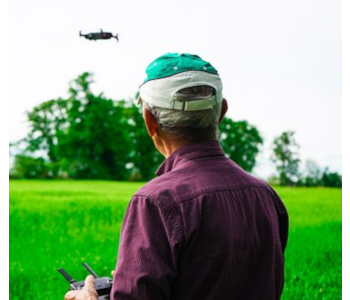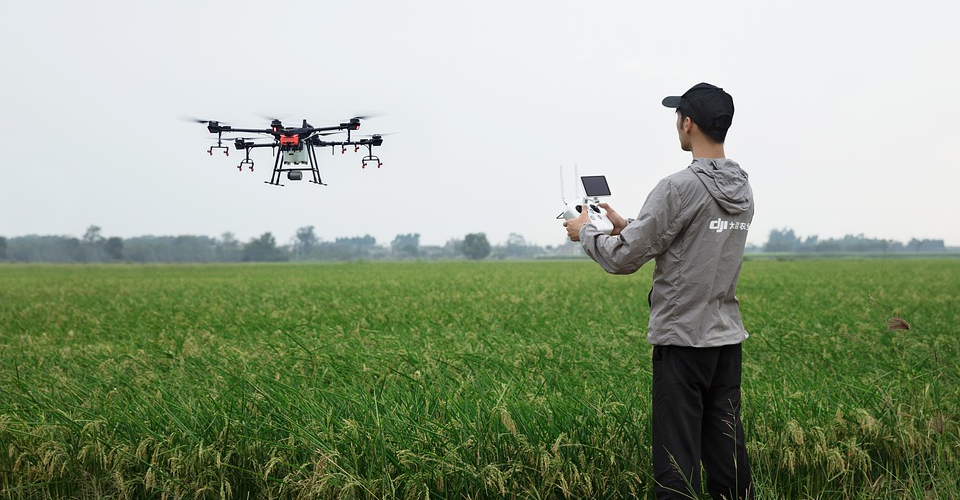Drone Basics: Yaw, Pitch, and Roll Definitions
Before you can be a good drone pilot, you have to understand the language first. Since FAA-certified drone pilots are treated like airmen nowadays, they are expected to be able to understand and use common aviation-related terms. This facilitates communication between drone pilots, the FAA, air traffic control facilities, and law enforcement.
Three of the most common terms you’ll hear in discussions about aircraft operations are yaw, pitch, and roll. These terms apply to all forms of air travel, including fixed-wing and quadcopter drones. What exactly do these three terms mean?
The three principal axes of flight
Unlike land-bound vehicles, aircraft can move in three dimensions. Aside from forward, backward, and sideward movement, they can also gain or lose altitude. This extra dimension of motion makes the operations of aircraft a little more complex than if you were driving a car.
It’s easier to think of the movements of an aircraft as rotations along the three principal axes: one running forward to back, another running right to left, and one running up and down. By rotating or tilting along these different axes, an aircraft can move forward or backward, left or right, or simply rotate in place. We will be referring to these three principle axes throughout our discussion of yaw, pitch, and roll.
The difference between yaw, pitch, and roll

To better understand the difference between yaw, pitch, and roll, it’s important to imagine them in terms of the three principal axes. The movement of an aircraft is influenced by rotating along any of these axes. A yaw, pitch, or a roll also doesn’t need to be done exclusively – a combination of any of these maneuvers can be done, although it will take exceptional skill in controlling exactly where the aircraft will go.
A roll is a rotation of the aircraft along the axis that runs in the forward and backward direction. Think of it as the aircraft leaning in either the left or right direction, therefore making the aircraft “roll” in either direction.
A pitch is a rotation of the aircraft along the axis that runs left to right. It’s easiest to imagine this as the aircraft “leaning” forward or back, resulting in movement in the corresponding direction. Combined with a roll, a pitch can be used to make banked turns, allowing your drone to change direction quickly and smoothly. For fixed-wing aircraft, the pitch is also the main mechanism for managing ascent or descent.
Lastly, a yaw is the rotation of the aircraft along a vertical axis. This is simply the rotation of the drone from left to right, similar to how you turn your head. This is useful capturing wide panning shots with your drone’s camera or to simply change your drone’s orientation. It doesn’t help much in terms of mobility but it is a great way to fine-tune exactly where you want the head of your drone to be pointed.
Throttle – the fourth component of rotor-based flight
Quadcopters have an additional element to how they generate motion. Throttle simply refers to the speed at which the propellers rotate. While hovering in place, adjusting the throttle of a quadcopter will make it gain or lose altitude.
What makes quadcopters distinct from fixed-wing aircraft is that their propellers are responsible for providing both lift and propulsion. This means that throttle can also be used to control how fast a drone moves in any direction. This contrasts well with yaw, pitch, and roll – while yaw, pitch, and roll determine the direction of the movement of a quadcopter drone, its throttle determines how fast it moves.
A few tips
- Getting used to controlling the yaw, pitch, and roll is one of the first few lessons of drone flight. Since all these movements take place relative to where the drone’s head is pointed to, it’s critical that the drone pilot always takes note of the drone’s orientation.
If you are finding this difficult, you can practice on a drone that offers a Headless Mode. However, flying in Headless Mode for too long will develop bad habits that you’ll need to unlearn later on. It’s best to fly in normal mode and overcome that steep learning curve as soon as possible.
- A good way to practice your drone flight skills is to fly your drone along a figure-of-eight pattern. This is similar to doing donuts with a car and is a good way to learn how to combine the three motion patterns to achieve smooth turns. If you can master this, your aerial videos should come out better and you should be more comfortable flying around obstacles.
- Stalling occurs when the smooth flow of air that provides lift to the quadcopter becomes disrupted in some manner. This leads to an abrupt change in flight characteristics, often enough to cause the drone to crash.
Stalling typically happens while making a turn, although the exact angle at which stalling occurs will depend on several factors. Among these factors is the load, or the weight of the drone and its payload. How fast your drone is moving as it approaches the turn also plays a role. If you’re flying a particularly heavy drone, you may want to play it safe by approaching turns slowly and at more conservative angles.
- Getting used to controlling the yaw, pitch, and roll is one of the first few lessons of drone flight. Since all these movements take place relative to where the drone’s head is pointed to, it’s critical that the drone pilot always takes note of the drone’s orientation.
Final thoughts
There are a bunch of terms that you’ll need to learn before you can claim to be a good pilot. Not discounting complex ones related to interpreting weather forecasts and radio messages, the terms we’ve discussed here are some of the most basic. Yaw, pitch, and roll simply refer to the basic components of maneuvering your drone.
Knowledge of the terms and what they mean will play a big role if you need to get in touch with the FAA or if you’re working with a crew. Communication is key in certain scenarios and is a value espoused by the FAA.

